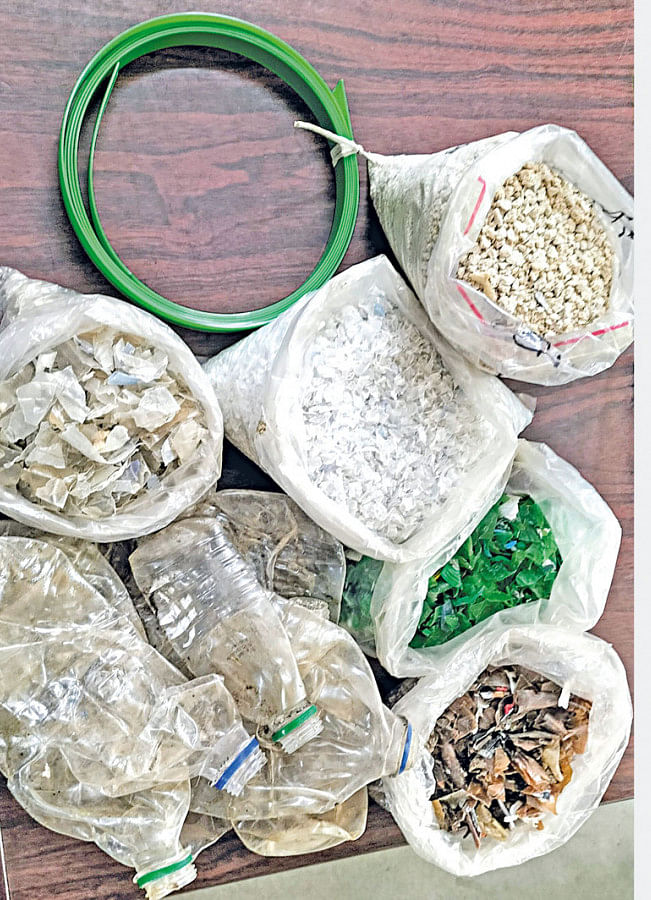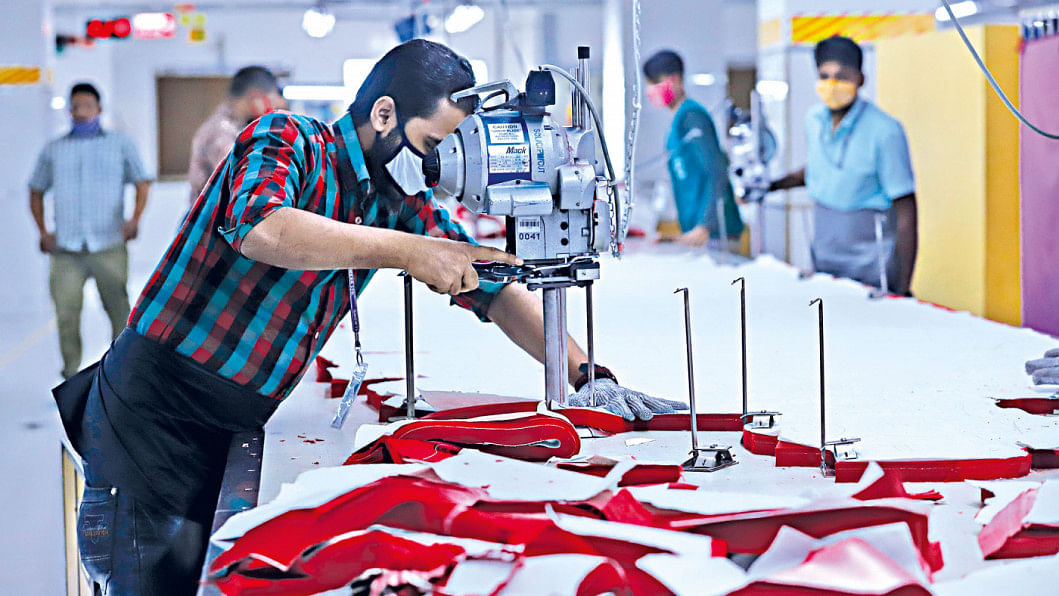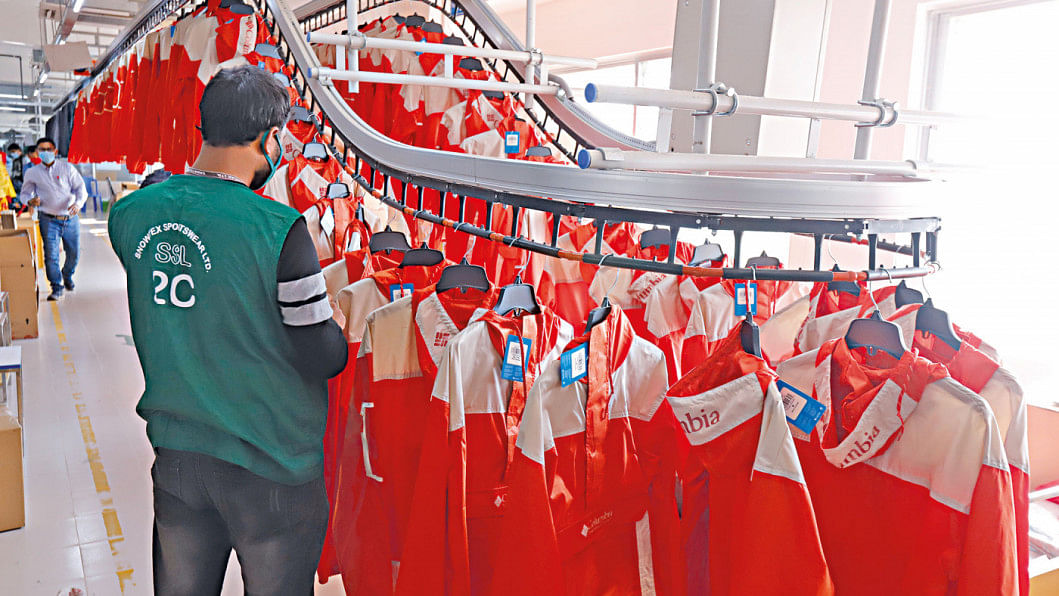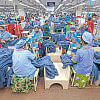Manmade Fibre: Bangladesh’s best bet to become top apparel exporter

Having become the world's second largest source for apparel items after China, Bangladesh is now pushing for the top spot by adding more value-added products to its export basket.
Clothes made of manmade fibre (MMF) are playing a particularly vital role in this regard as such highly value-added apparel items have significant demand abroad.
Besides, non-cotton apparel fetches higher prices than cottonwear for being more flexible, durable and functional, with the cost of a T-shirt made from MMF being about double that of one made from cotton.
As such, local garment makers have been diversifying their product base with non-cotton items.
Additionally, they have increased their production capacities, maintained consistency in supply and improved product quality over the past five decades.
Now, about 7.9 percent of all apparel items sold worldwide come from Bangladesh as the country has turned into a reliable source for international clothing retailers and brands.
And with about 29 percent of the country's garment exports comprising MMF products, Bangladesh aims to use this segment to expand its global market share to 12 percent by 2030.

With this in mind, the Bangladesh Garment Manufacturers and Exporters Association (BGMEA) aims to increase the country's annual apparel exports to $100 billion within the next six years.
Against this backdrop, local exporters have been exploring markets for MMF products and increasing their value addition, BGMEA sources said.
Value addition in the country's export-oriented garment items currently stands at about 71 percent, as per data of Bangladesh Bank.
Exporters attribute the growing volume of MMF apparel shipments for the increased value addition in export-oriented garment items.
This is because the MMF segment accounts for a bulk of the export receipts from highly value-added garments, with some producers even exporting MMF jackets worth $100 per piece.
The share of MMF in global fibre production has increased to 78 percent over the past five years, according to a study, styled "Beyond Cotton – A Strategic Blueprint for Fiber Diversification in Bangladesh Apparel Industry", released in March this year.

Of the total non-cotton fibre production, about 39 percent is comprised of polyester filament yarn while polyester staple fibre makes up 15 percent, the study shows.
And although the production of nylon filament yarn and viscose staple fibre has increased, they each account for just 5 percent of the global output.
On the other hand, global production of acrylic staple fibre declined from 1.7 percent in 2017 to 1.4 percent in 2022. Meanwhile, wool and silk have a negligible global production share of 1 percent and 0.1 percent respectively.
Volume-wise, the trade of both cotton and non-cotton fibres has increased at a rate of about 1 percent annually from 2018 to 2022.
During this five-year period, global trade of polyester fibre fell by a compound annual growth rate of 3 percent while polyester yarn and fabric saw increases of 1 percent and 2 percent respectively.
The boom in local MMF apparel production was practically initiated by the collapse of Rana Plaza in April 2013 as the tragedy revealed how workers in the garment industry were subject to unbearable working conditions.
This prompted many international retailers and brands to move away from the country until certain conditions, particularly those laid out by the Alliance and Accord, were met by local producers.
So, as a part of the remediations, garment makers invested extensively to fortify workplace safety as per the recommendations, which included addressing fire, structural and electrical concerns.
Not only did this boost the confidence of foreign buyers, but it also led to Bangladesh emerging as the global champion in green garment factories.
Now, the country has 217 LEED certified green garment units, of which 83 are platinum rated, 120 are gold, 10 are silver and four are just certified by the US Green Building Council.
It was only after these investments were made that the capacities of local garment makers reached such a level that they could diversify their product base with more value-added items and include non-cotton products.
Another trend that spurred the transition to synthetic fibres is changing fashion.
For example, the demand for casualwear such as polos and T-shirts made from blended fibres has increased as their acceptability in formal settings such as offices has risen over the past decade.
Now, non-cotton apparel is the largest and fastest growing category of garment exports, contributing 50 percent of all shipments from leading sources such as China, Vietnam and Italy.
The concentration of cotton apparel exports compared to non-cotton is higher in cotton producing countries like India and Turkey. However, Bangladesh accounts for a high share of global cotton apparel exports even though cotton production in the country is negligible at best.
China is the largest exporter of non-cotton apparels with a market share of 36 percent while India contributes 2 percent and Bangladesh provides 1 percent.
However, China's share is declining as it was 56 percent just a few years ago while India is also seeing reduced non-cotton apparel exports.
On the other hand, the situation is reverse in Bangladesh as the country's share in the global non-cotton apparel trade used to be even less than 1 percent, the study shows.
"If we want to achieve more from garment exports, the traditional model will not work as a new model prioritising fibre diversification is needed," said Faruque Hassan, the immediate past BGMEA president.
The data also shows that MMF imports recently increased, indicating that local garment manufacturers are expanding their product base.
"Still, government support is needed for the sector's growth," Hassan said.
Against this backdrop, he urged the government for a 10 percent incentive on exports of MMF garments to encourage production and thereby help grab a bigger share of the global non-cotton apparel market.
"Cotton is also a priority for Bangladesh but MMF-based garment production is an innovative idea to grab more market share," Hassan said.
He also urged for withdrawal of the Tk 3 value-added tax on sales of MMF yarn in the domestic market.

But like all things artificial, MMF does come with its own set of drawbacks, particularly environmental.
MMF or synthetic fibres are engineered through a complex chemical process rather than being manufactured from natural sources.
In essence, these fibres are mainly made from polymers derived from petrochemicals.
So, while the fossil-fuel-derived fibres are not conflict materials, they are products of an industry with a heavy social impact.
Besides, MMF are not biodegradable and have been contributing to environmental pollution as washing non-cotton clothes releases microplastics.
It is estimated that between 16 to 35 percent of the global microplastic pollution in oceans comes from synthetic textiles.
Additionally, MMF have been linked to several potential health concerns, including skin irritation, allergies, respiratory problems, and even cancer in some cases.
Also, some synthetic textiles are treated with chemicals that can be harmful to human health, and prolonged exposure could lead to adverse effects.

 For all latest news, follow The Daily Star's Google News channel.
For all latest news, follow The Daily Star's Google News channel. 







Comments